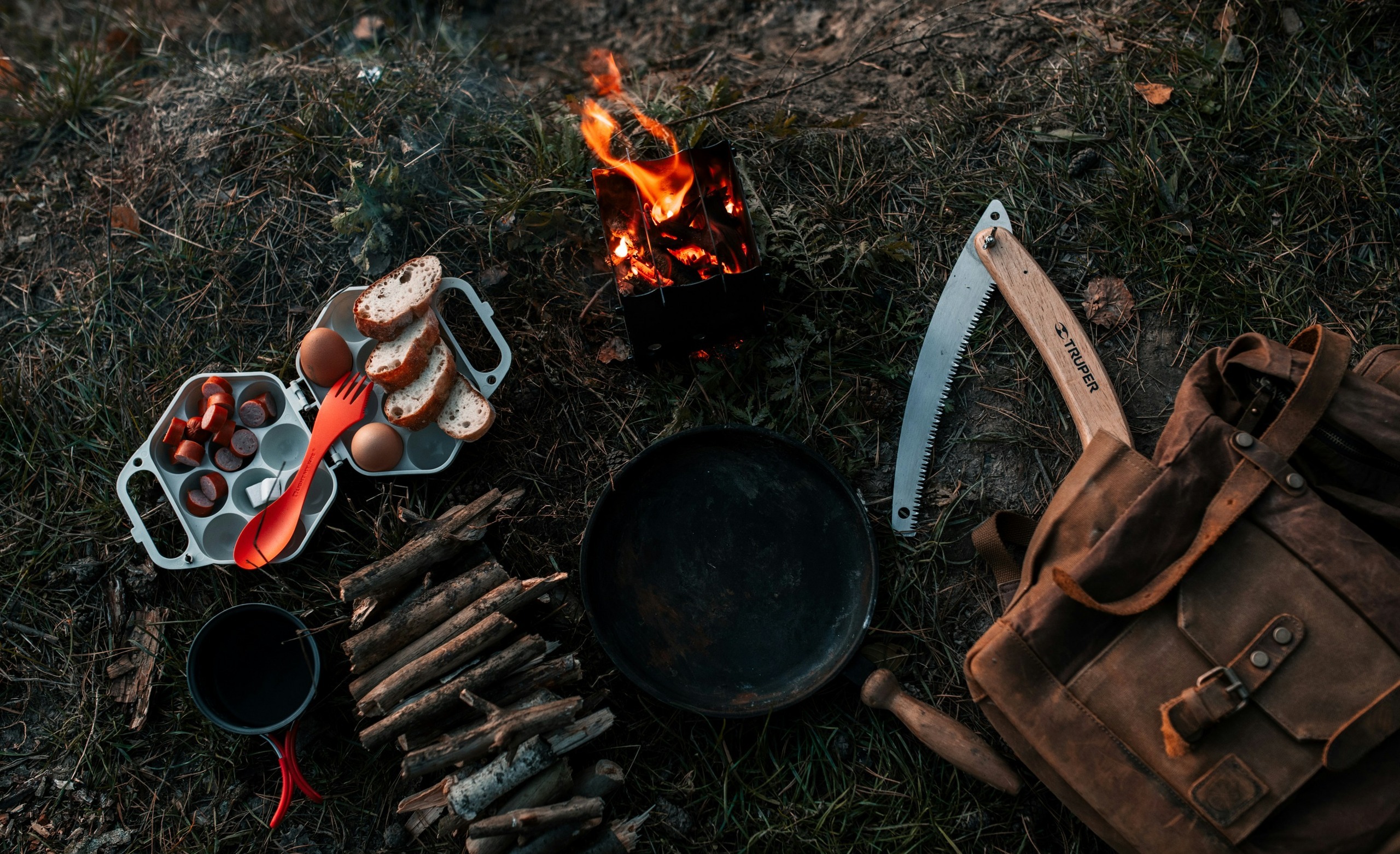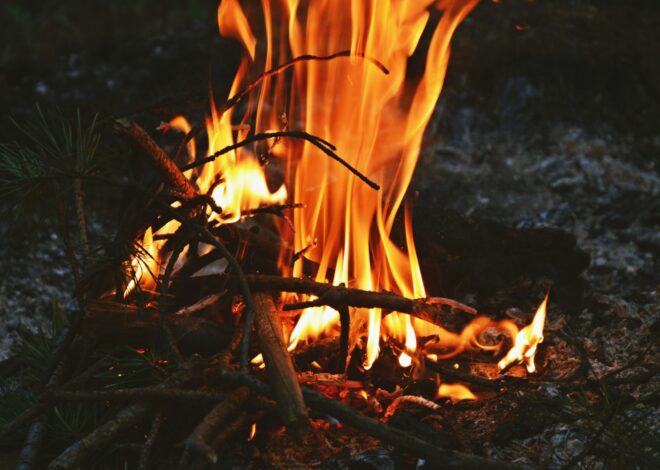
How To Find Food For Survival
Welcome to our ultimate guide on how to find food for survival. When it comes to survival, the ability to find food can mean the difference between life and death. Whether you’re lost in the wilderness or facing an unexpected disaster scenario, knowing how to source nourishment is crucial.
The sheer thought of foraging through unknown terrain may seem daunting, but fear not! With the right knowledge and skills, you can confidently navigate your way to sustenance. Survival situations often require quick thinking and resourcefulness.
Understanding what constitutes food is just as essential as knowing where to find it. From wild edibles to hunting techniques, there’s a wealth of resources available if you know where to look. So let’s dive deeper into this essential skill set that every adventurer should master—because when hunger strikes, being prepared can save your life.
Understanding the Basics of Survival Nutrition
Survival nutrition is crucial when faced with dire circumstances. Your body needs energy to function, and food provides that essential fuel. Understanding macronutrients is the first step. Carbohydrates give immediate energy, while proteins are vital for muscle repair and immune function.
Fats offer long-lasting energy reserves. Micronutrients such as vitamins and minerals also play a role in overall health. They support bodily functions like metabolism and hydration. A well-balanced intake can mean the difference between thriving or merely surviving. Water should not be overlooked either; it’s just as important as food in sustaining life.
Hydration impacts your physical performance and mental clarity during survival situations. Knowing how to adapt your nutritional choices to available resources is key. Survival may require flexibility in what you consume, but understanding these basics will help keep you energized and focused on finding your next meal.
Understanding the Importance of Food in Survival Situations
Food is a critical component of survival. Without it, the body quickly loses strength and stamina. Energy levels plummet, making even simple tasks feel overwhelming. When facing harsh conditions, proper nutrition can be the difference between life and death.
Food fuels vital functions like maintaining body temperature and supporting mental clarity. In a crisis, staying focused is essential for making sound decisions. Moreover, food provides hydration which is just as important as nourishment itself. Many edible plants have high water content that can sustain you when fresh water isn’t available.
Understanding what to eat in survival situations not only ensures physical health but also boosts morale. A warm meal or snack can provide comfort in dire circumstances, helping to maintain hope amid adversity. Recognizing the importance of food lays the foundation for effective survival strategies that keep you resilient and ready for whatever challenges arise.
Immediate Food Sources in a Survival Situation
In a survival situation, immediate food sources can make all the difference. Foraging for wild edibles should be your first instinct. Look around for fruits and nuts that may grow in abundance, such as acorns or berries. Insects are often overlooked but offer high protein content.
Crickets and grasshoppers are not only abundant but also nutritious. If you’re near water, consider trapping small fish or gathering shellfish if it’s safe to do so. These quick catches require minimal tools and can help sustain energy levels. Do not forget about birds; they might seem elusive yet provide valuable calories when cooked properly.
Remember that scavenging could lead to discovering remains of larger animals as well—always ensure it’s safe before consuming anything discovered this way! Adaptability is key in these moments; nature has many hidden treasures waiting to be found if you know where to look.
Identifying Edible Plants and Berries in the Wild
Identifying edible plants and berries in the wild can be a game-changer during survival situations. With a keen eye and some knowledge, you can find nature’s bounty all around you. Start by familiarizing yourself with common species like dandelions, clovers, and wild berries such as blackberries or raspberries.
Visual guides or apps can help you recognize these plants quickly. Always remember the rule of thumb: if you’re unsure about a plant’s edibility, don’t eat it. Some look tempting but are toxic. When foraging, focus on areas away from pollution—like roadsides or industrial sites—to ensure safety.
Check for signs of animal grazing; where wildlife thrives often indicates a safe food source. Seasonality plays an important role too. Plants bloom at different times of year; knowing their cycles increases your chances of finding them when they’re ripe for picking.
Long-term Food Sources for Sustained Survival
When planning for long-term survival, it’s crucial to think beyond immediate sustenance. Cultivating and maintaining a reliable food source can make all the difference. Consider starting a small garden. Vegetables like potatoes, carrots, and leafy greens are hardy options that can provide essential nutrients over time.
They’re relatively easy to grow with minimal resources. For those in wooded areas, consider planting fruit-bearing trees or bushes. Apples, berries, and nuts not only offer delicious snacks but also serve as valuable sources of energy. Another option is developing skills in permaculture or companion planting.
This method creates sustainable ecosystems where plants support each other’s growth while minimizing pests naturally. Don’t forget about animal husbandry if you have space. Chickens or rabbits require less maintenance than larger livestock yet provide consistent protein sources through eggs or meat. Focus on these strategies to ensure your survival plan remains robust over time.
Essential Tools for Hunting and Gathering Food
When venturing into the wild for survival, having the right tools can make all the difference. A sturdy knife is essential; it’s versatile for tasks like cutting and skinning. Look for a fixed-blade knife that is durable and easy to wield. Next, consider a reliable fishing line or net.
These are invaluable when trying to catch fish in rivers or lakes. They require minimal effort but can yield significant rewards. Don’t overlook traps. Simple snares can be set up using natural materials found around you, allowing you to capture small game while you focus on other survival tasks.
A good backpack will help transport your gathered food comfortably. Choose one with multiple compartments so you can organize tools and supplies efficiently while out in nature’s embrace.
Hunting Techniques for Food Procurement
Hunting for food is an ancient skill that requires patience and strategy. Knowing how to track animals can significantly improve your chances of a successful hunt. Look for footprints, droppings, or disturbed foliage. These signs reveal the presence of wildlife. Setting traps is another effective technique.
You don’t need high-tech gear; simple snares made from natural materials can do the job. Position them in areas where animal trails converge for better results. Consider using camouflage to blend into your surroundings. Animals are more likely to approach if they don’t sense danger nearby.
Sound plays a role too; quiet movements are essential when stalking prey. A sudden noise could send potential meals fleeing before you even get close. Timing matters greatly. Early mornings and late afternoons are prime hunting hours when many animals are active and searching for food themselves.
Fishing Techniques for Food Procurement
Fishing can be a reliable source of food in survival situations. Understanding the local water bodies is essential. Look for lakes, rivers, or coastal areas where fish are abundant. Simple techniques like hand fishing can yield surprising results. This involves wading into shallow waters and using your hands to catch fish directly.
It requires patience and practice but can be effective. Another method is using improvised fishing lines made from natural materials like vines or plant fibers. Attach hooks fashioned from bent twigs or sharp stones to these lines for added effectiveness. Consider setting up traps as well.
Fish baskets constructed from sticks or reeds can capture unsuspecting fish without requiring constant attention. Remember that timing matters; early mornings and late evenings often bring increased activity near the surface, making it easier to catch your next meal with minimal effort.
Alternatives to Hunting and Gathering
When traditional hunting and gathering isn’t an option, there are several alternatives to consider. Foraging for insects can be a surprising yet nutritious choice. Many bugs are high in protein and rich in essential nutrients. Engaging with local wildlife is another method.
Observing animal behavior can lead you to potential food sources like eggs or nests, especially near water bodies. Don’t overlook edible seaweed if you’re near the coast. It’s not only packed with vitamins but also serves as a great seasoning for meals. Bartering is another effective strategy when stranded in community settings.
Trading skills or items may yield food from others who have access to resources you lack. Learning about wild mushrooms can open up new culinary doors—just make sure they’re safe to eat before indulging! There’s much more out there than we often realize, even beyond traditional methods of survival sustenance.
Preserving and Storing Food in Survival Situations
Preserving food is crucial when survival depends on it. Without proper methods, your hard-earned resources can spoil quickly. Dehydration is one of the simplest techniques. Removing moisture prevents bacteria from thriving, ensuring that berries or meats last longer.
You can use sunlight for this process if you’re in a warm climate. Canning is another effective option for long-term storage. With makeshift containers and fire, you can create sealed jars to store soups or stews. Fermenting offers a unique twist to preservation as well.
Foods like vegetables turn into tangy delights while extending their shelf life. If refrigeration isn’t available, consider using cold water streams or burying foods underground where temperatures remain stable. Always remember to check your supplies regularly. Rotting food can ruin entire stores of provisions and pose health risks during critical times.
Conclusion: Prioritizing Food in Your Survival Plan
When it comes to survival, food is non-negotiable. Its importance cannot be overstated. Whether you find yourself lost in the wilderness or facing a disaster at home, knowing how to locate and procure food can mean the difference between life and death.
Prioritizing food in your survival plan is essential. Familiarize yourself with local edible plants and learn about hunting techniques that suit your environment. Equip yourself with necessary tools for gathering or fishing, which can provide both immediate relief and long-term sustenance.
Always have a backup plan. Consider alternatives such as foraging or creating traps when traditional methods fail. It’s also crucial to know how to preserve any food you gather so it lasts longer during tough times.
Survival situations are unpredictable, but proper preparation can greatly enhance your chances of success. Stay informed, remain adaptable, and always prioritize finding nourishment wherever you’re located. Your ability to secure food will empower you when everything else seems uncertain—making all the difference in your survival journey.



